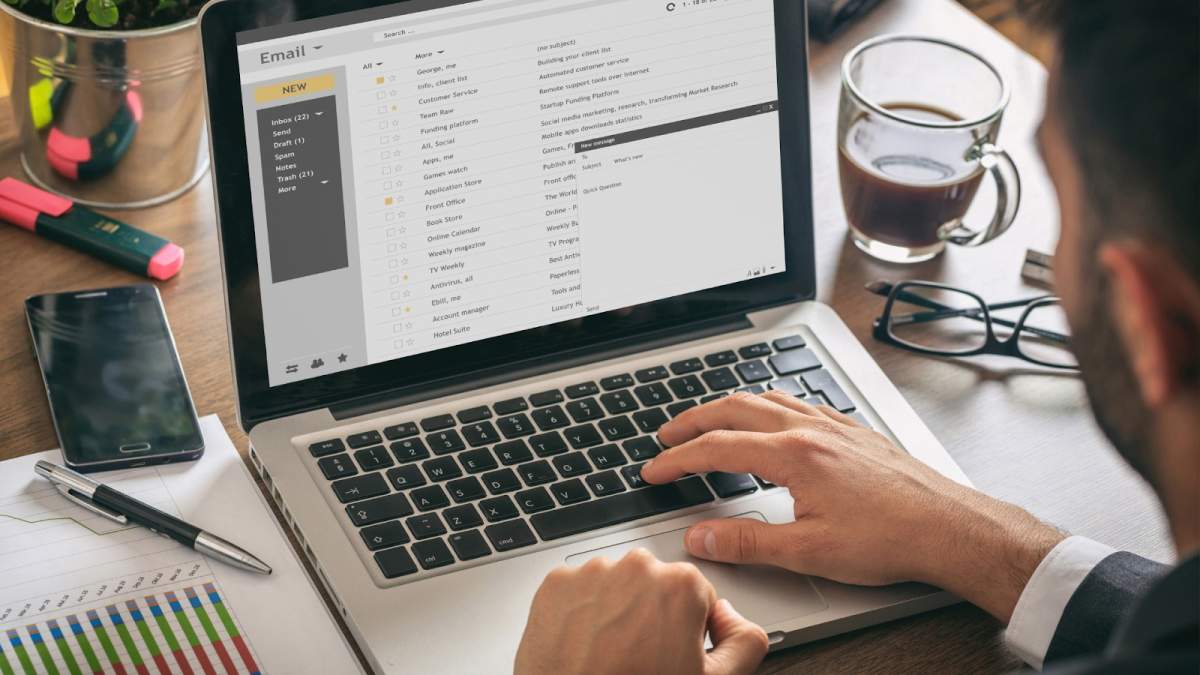We’ve all received emails that feel like they were copied and pasted a hundred times, and let’s be honest, they go straight to trash. But when an email speaks directly to you, it grabs your attention. That’s the power of personalization.
It’s not just about using someone’s name, it’s about making your message feel real, relevant, and thoughtful. Whether you’re in sales, marketing, or just building relationships, personalized emails show people they matter.
In this blog, we’ll explore how small tweaks can help you build stronger connections and get better replies, because real conversations start with real effort.
Beyond First Names: Redefining Email Personalization in 2025
Before exploring specific strategies, it’s important to understand that effective email personalization has evolved far beyond simply dropping someone’s name into the subject line. Today’s savvy marketers are creating deeply tailored experiences that speak to individual preferences, behaviors, and needs.
The Evolution from Basic to Advanced Personalization Techniques
Remember when seeing your name in an email subject line felt special? Those days are long gone. Basic personalization tactics like first-name greetings are now the bare minimum. Advanced personalization involves analyzing behavioral data, purchase history, and browsing patterns to create truly individualized experiences.
To stand out, you need to understand how to personalize email content based on where recipients are in their customer journey. This might mean sending different product recommendations to first-time visitors versus loyal customers, or adjusting your tone and messaging based on previous interactions.
Real-World ROI: Measurable Benefits of Personalized Email Campaigns
The numbers don’t lie: personalized email outreach delivers significant returns. According to industry data, emails with personalized subject lines have an open rate that’s more than 20% higher than generic ones. Beyond opens, personalization drives meaningful engagement that converts to revenue.
The Psychology Behind Why Personalized Emails Create Deeper Connections
At its core, personalization works because it triggers reciprocity, one of the most powerful psychological principles in human interaction. When someone feels you’ve taken the time to understand their needs, they’re naturally inclined to respond positively. Personalized emails signal that you value the recipient as an individual, not just another entry in your database.
Now that we understand why personalization matters so much, let’s look at how to gather the right data to fuel these efforts.
Essential Data Collection Strategies for Effective Personalization
Creating truly personalized emails requires having the right information about your subscribers. Without good data, even the most sophisticated personalization strategies fall flat.
Strategic Signup Form Design to Gather Valuable Subscriber Information
Your signup forms are the first opportunity to collect personalization data. But there’s a delicate balance, ask for too much information, and you’ll see abandon rates skyrocket; ask for too little, and you limit your personalization capabilities.
Start with essential fields like name and email, then strategically add one or two fields that will provide valuable segmentation data, such as industry, role, or key interests. Always make it clear why you’re collecting this information and how it will benefit the subscriber.
Behavioral Data: Tracking Interactions for Context-Based Personalization
What your subscribers do often reveals more than what they say. Tracking email opens, clicks, website visits, and content downloads gives you powerful behavioral insights that can drive personalized cold email strategies. This data helps you understand which topics interest specific subscribers and where they are in their buyer’s journey.
Integrating CRM Data to Create 360° Customer Views
Your CRM is a goldmine for email personalization strategies. By connecting your email platform with your CRM, you can leverage purchase history, support interactions, and other valuable customer data points to create hyper-relevant messaging.
Progressive Profiling: Building Customer Profiles Over Time
Rather than overwhelming new subscribers with questions, progressive profiling collects information gradually through subsequent interactions. This might include preferences shared during onboarding, responses to polls or surveys, or data gathered during purchase processes.
With a solid data foundation in place, you can now focus on building the key elements of personalized emails.
Personalized Email Outreach Building Blocks: From Elements to Campaigns
Effective personalized email marketing isn’t just about data—it’s about how you use that data to create compelling communications that resonate with recipients.
Subject Line Personalization Techniques That Boost Open Rates
Your subject line is the gateway to your email content. Beyond simply adding a name, effective personalized subject lines mention relevant products, reference previous interactions, or highlight content based on known interests. The best personalized subject lines create curiosity while establishing relevance.
Dynamic Content Blocks: Creating Emails That Adapt to Each Recipient
Dynamic content allows different subscribers to see different versions of the same email based on their data profile. This could mean showing different product recommendations, adjusting imagery to match demographic preferences, or highlighting different benefits based on known pain points.
Personalized Call-to-Action Strategies That Drive Conversions
Generic CTAs like “Learn More” or “Shop Now” miss opportunities for personalization. Tailored calls-to-action that reflect where someone is in their buyer journey or reference their specific interests can dramatically improve conversion rates.
These building blocks form the foundation for more sophisticated email personalization strategies tailored to different business objectives.
Cold Email Personalization: Standing Out in Crowded Inboxes
Cold emails present unique personalization challenges, as you typically have limited data about recipients. Yet personalized cold email examples consistently outperform generic templates.
Research Methods to Generate Relevant Cold Email Personalization
Effective cold email personalization begins with research. This might include reviewing LinkedIn profiles, company websites, recent news mentions, or shared connections. The goal is to find relevant details that demonstrate you’ve done your homework and aren’t just sending a mass blast.
Personalized Cold Email Examples That Earned Exceptional Response Rates
The most successful personalized cold email examples reference specific achievements, content the recipient has published, mutual connections, or relevant industry challenges. These emails feel less like cold outreach and more like the beginning of a meaningful conversation.
| Personalization Element | Generic Approach | Personalized Approach | Impact |
| Subject Line | “Introducing Our Service” | “About your recent article on [topic]” | 27% higher open rates |
| Introduction | “I’m reaching out because…” | “I noticed your company recently [specific achievement]” | 31% higher response rates |
| Pain Point | “Most companies struggle with…” | “Based on your recent expansion, you might be facing…” | 42% higher engagement |
| CTA | “Schedule a call” | “Would you like to see how [specific competitor] solved this?” | 35% higher conversion |
How to Personalize Cold Email Without Coming Across as Intrusive
The line between personalized and creepy is thin. Effective email personalization strategies demonstrate awareness without suggesting you’ve been stalking someone. Focus on publicly available professional information rather than personal details. Always ensure your personalization adds value rather than just showcasing how much you know about them.
The future of email personalization lies in balancing sophisticated technology with authentic human connection.
The Bottom Line on Email Personalization
Personalization isn’t just a marketing tactic, it’s a relationship-building tool. When done right, personalized email outreach creates stronger connections by demonstrating that you understand and value each recipient as an individual. Start with the basics, gather quality data, and continually refine your approach based on performance metrics.
Remember that true personalization goes beyond technical capabilities, it requires empathy and genuine interest in solving problems for your audience. The brands that master this balance don’t just achieve better email metrics; they build lasting customer relationships that drive sustainable growth.
FAQs on Email Personalization
1. Do personalized emails perform better?
Strengthening customer engagement. Personalized emails have been shown to produce a 139% increase in click rate compared to static one-time sends.
2. How much does personalizing your email improve click-through rates by?
According to “The Power of Personalization: 2021 Email Marketing Report” by Campaign Monitor, personalized email messages have an open rate that’s 29% higher and a click-through rate that’s 41% higher than non-personalized messages.
3. How can personalization enhance email marketing?
Personalized email campaigns have higher engagement rates than generic ones, which means more people are opening, reading, and taking action on them. Personalized emails increase the likelihood of someone clicking a link to your website, giving you more opportunities to convert.











Leave a Comment